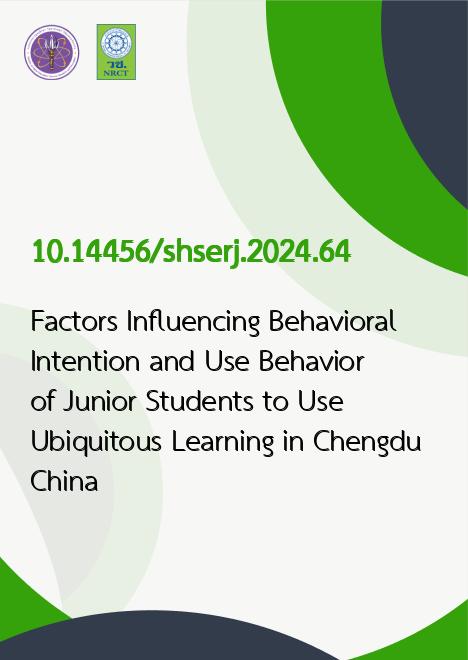
|
Factors Influencing Behavioral Intention and Use Behavior of Junior Students to Use Ubiquitous Learning in Chengdu China |
|---|---|
| รหัสดีโอไอ | |
| Creator | Jia Cheng |
| Title | Factors Influencing Behavioral Intention and Use Behavior of Junior Students to Use Ubiquitous Learning in Chengdu China |
| Publisher | Assumption University Press |
| Publication Year | 2567 |
| Journal Title | The Scholar: Human Sciences |
| Journal Vol. | 16 |
| Journal No. | 3 |
| Page no. | 111-121 |
| Keyword | Ubiquitous Learning, Perceived Usefulness, Social Influence, Behavioral Intention, Use Behavior |
| URL Website | http://www.assumptionjournal.au.edu/index.php/Scholar/article/view/7645 |
| Website title | The Scholar: Human Sciences |
| ISSN | 2586 - 9388 |
| Abstract | Purpose: The purpose of this study is to investigate the factors that influence the behavioral intention and behavior of third year college students when using ubiquitous Learning in Chengdu, Sichuan Province. The key variables are understanding u-learning, assimilating u-learning, applying u-learning, perceived usefulness, e-learning motivation, social influence, behavioral intention, and use behavior. Research design, data, and methodology: The researcher employed quantitative techniques and questionnaires to gather data from the designated population. Our sampling approach encompassed purposive, quota, and convenience sampling methods. Prior to questionnaire distribution, we assessed content validity and reliability through pilot tests, utilizing the Item-Objective Congruence Index and Cronbach's Alpha. To scrutinize the data, assess model fit, and validate the causal relationships among variables for hypothesis testing, we conducted Confirmatory Factor Analysis and Structural Equation Modeling. Results: The findings indicate that the conceptual model can explain the behavioral intention and usage behavior. understanding u-learning and applying u-learning significantly influence perceived usefulness. Perceived usefulness, e-learning motivation, social influence significantly influences behavioral intention towards use behavior. Nevertheless, assimilating u-learning has no significant influence on perceived usefulness. Conclusions: The adoption of ubiquitous learning among third-year college students holds the promise of enhancing their educational experience and preparing them for the challenges of the digital age. |
